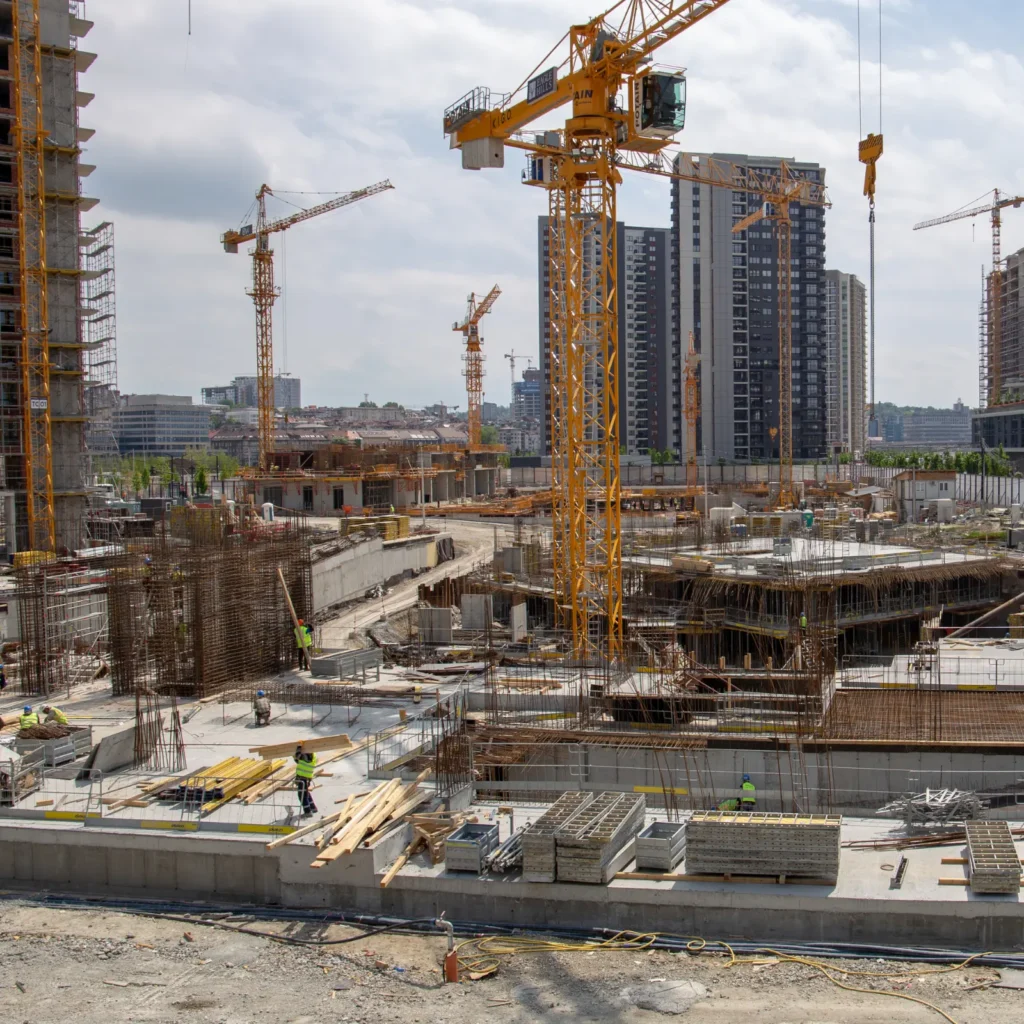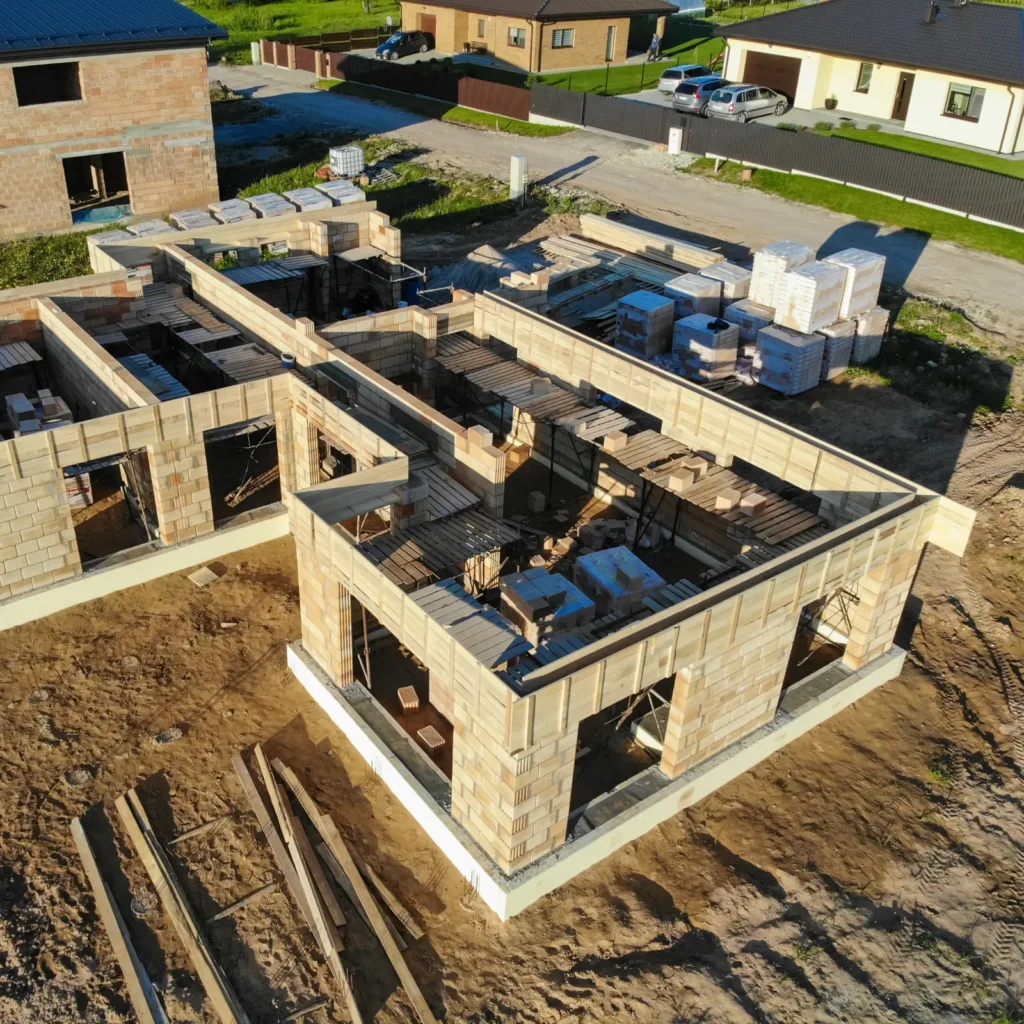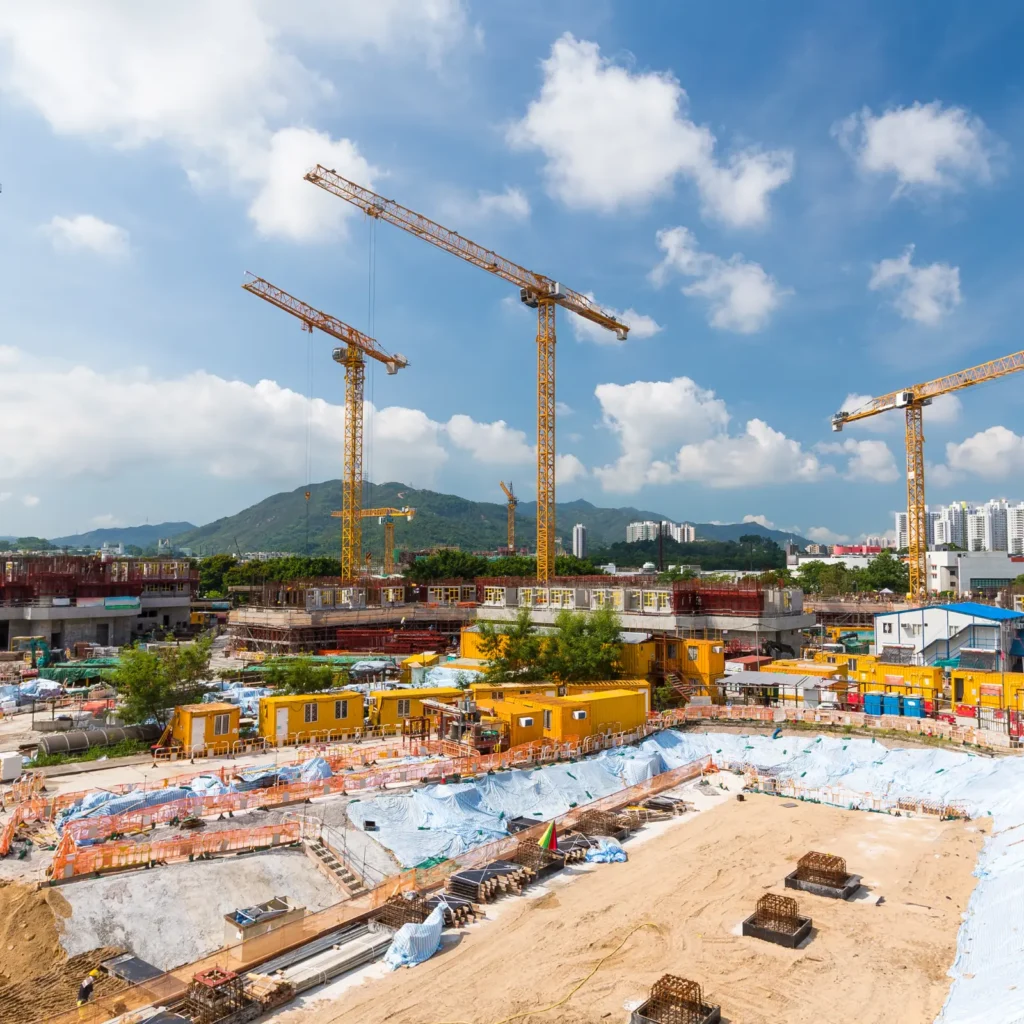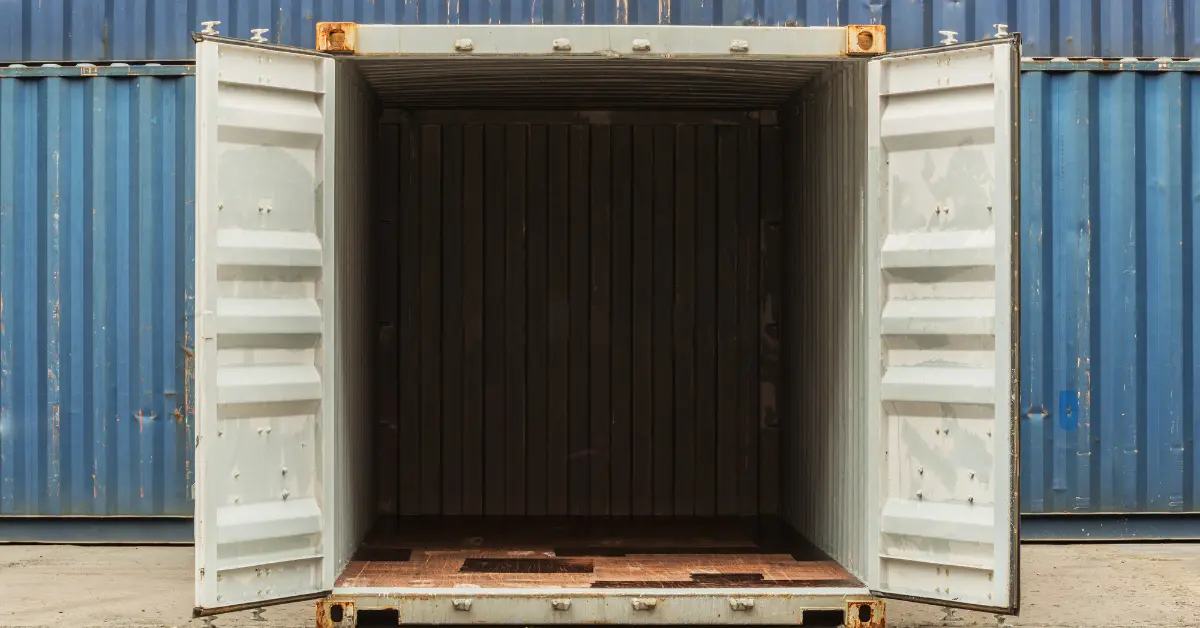Construction sites, by their very nature, are open and accessible areas that can easily become targets for theft. With the constant coming and going of workers and deliveries, it’s challenging to keep a watchful eye on every piece of material or equipment. This openness is compounded by the fact that construction sites often lack permanent structures, making it easier for unauthorized persons to access valuable tools and materials. Recognizing these vulnerabilities is the first step toward effective theft prevention at construction sites. By understanding the weak points, site managers can implement targeted strategies to safeguard their assets, ensuring that projects can proceed without costly interruptions or delays.

Theft Prevention Strategies for Construction Sites
Utilizing Onsite Storage Containers
One of the most effective ways to protect materials and equipment is by using onsite storage shipping containers. These heavy-duty containers are designed to withstand harsh conditions and unauthorized entry, making them an ideal solution for securing valuable assets. By keeping materials locked up when not in use, you drastically reduce the risk of them being stolen or damaged. Furthermore, these containers can be strategically placed around the site to maximize efficiency and ease of access for workers, without compromising security.
Portable Storage Solutions for Flexibility
For construction sites that are spread out or frequently changing locations, portable storage solutions provide the flexibility needed to maintain security without sacrificing mobility. Portable storage shipping containers can be easily transported from one site to another, offering a secure and weatherproof option for storing tools and materials. These containers come in various sizes and can be customized with shelving and lock boxes to meet the unique requirements of each construction project. On the other hand, utilizing lockable shipping containers and even smart locking mechanisms can be an invaluable asset for construction companies.
Implementing Strict Access Controls
Effective construction site security also depends on controlling who can enter the site and access stored materials. Implementing strict access controls ensures that only authorized personnel are allowed on the premises. This can be achieved through manned security gates, electronic access systems, or even biometric scanners. Keeping a detailed log of who enters and exits the site can help track down potential security breaches and deter would-be thieves.
Beyond Physical Storage: Enhancing Site Security
Surveillance Technology to Monitor Activity
Surveillance technology plays a pivotal role in enhancing construction site material security and monitoring activities across various settings, including businesses, public areas, and private properties. By strategically implementing and managing surveillance systems, organizations, and individuals can deter crime, monitor activities, and gather crucial evidence when incidents occur. These strategies ensure comprehensive coverage and operational efficiency, contributing to a safer and more secure environment:
- Install Cameras at Strategic Points: Placing cameras at entrances, exits, storage areas, and locations where valuable items are stored is critical for comprehensive site surveillance. This strategic placement ensures that all potential points of unauthorized access and areas of high importance are monitored continuously. By covering as much of the site as possible, you can deter theft and vandalism, quickly respond to incidents, and gather valuable evidence for investigations. The visibility of cameras also acts as a deterrent to potential intruders, making them think twice before attempting any unauthorized activity.
- Use Motion-Sensing Cameras: Motion-sensing cameras are an efficient solution for reducing unnecessary recording, saving on storage space, and minimizing energy consumption. By activating only when there is movement, these cameras focus on capturing significant events, eliminating the need to review hours of irrelevant footage. In low-traffic regions or after hours, this capability is very helpful as it keeps the surveillance system vigilant for any odd activity and documents possible security breaches or events.
- Implement Night Vision Technology: The cover of darkness offers an opportunity for unauthorized activities, making it crucial to maintain surveillance during non-operational hours. Cameras equipped with night vision capabilities ensure continuous monitoring and security, even in low-light conditions. This technology is essential for capturing clear footage of incidents or intrusions that occur at night, providing a critical tool for identifying perpetrators and understanding the context of events.
- Regularly Maintain and Test Equipment: To ensure the surveillance system remains effective and reliable, regular maintenance and testing are essential. This includes checking camera functionality, ensuring that lenses are clean for clear footage, and verifying that data storage systems are securely archiving videos. Routine inspections help to identify and rectify any issues before they impact the system’s performance, ensuring that surveillance capabilities are not compromised and that footage is always available.
By optimizing surveillance practices, organizations can protect their assets, ensure the safety of individuals, and maintain a secure environment. This comprehensive approach to surveillance emphasizes the importance of technology in modern security strategies, leveraging advancements to address complex security challenges.
Alarms and Motion Sensors
Alarms and motion sensors serve as critical components in the security infrastructure of construction sites, offering an advanced layer of protection that goes beyond the traditional means of security. Motion sensors are strategically installed at vulnerable points across the construction site, such as perimeter fence lines, equipment storage areas, entry and exit points, and other critical locations prone to unauthorized access. These sensors are designed to detect any unusual movement or presence in these areas, functioning as an early warning system. Upon detecting motion, these sensors trigger alarms that serve a dual purpose: deterring potential intruders through audible or visual alerts and promptly notifying onsite security personnel or law enforcement agencies of a possible breach.
Establishing Security Protocols
Creating and enforcing strict security protocols for both workers and visitors plays a pivotal role in maintaining site security. This involves clear identification measures, such as badges or ID cards. Implementing sign-in and sign-out procedures can also help keep track of who is on the premises at any given time, providing a record that can be invaluable in the event of a security breach. Furthermore, limiting site access during off-hours and conducting regular security briefings can keep everyone informed of potential risks and the steps being taken to mitigate them.

Comprehensive Material Security Plans
Physical and Procedural Security Measures
The integration of physical and procedural security measures is critical in creating a robust defense against potential threats and vulnerabilities. Here’s how such an integrated security strategy can be developed and maintained:
- Conduct a Comprehensive Risk Assessment: The first step in bolstering security is to understand the unique risks and vulnerabilities your construction site faces. This involves a thorough examination of the site layout, operations, and external factors to identify potential security gaps. By prioritizing these vulnerabilities based on the level of risk they pose, you can allocate resources effectively and focus your security efforts where they are most needed. A comprehensive risk assessment is the foundation of any effective security plan, ensuring that measures are both proactive and responsive to the specific threats identified.
- Develop a Layered Security Plan: A multi-layered security strategy combines physical barriers such as fencing and locks, technological solutions like surveillance cameras and motion sensors, and strategic lighting to deter unauthorized access. Complementing these with procedural measures including access control systems, visitor management protocols, and inventory tracking creates a comprehensive defense mechanism. With a depth of defense that is challenging for intruders to breach, this layered strategy guarantees that, if one security measure fails, others are in place to reduce the risk.
- Monitor and Audit Security Measures: Ongoing evaluation of security strategies is necessary to ensure their effectiveness and to adapt to evolving threats. Regular monitoring and auditing of both physical and procedural measures allow for the identification of any shortcomings or areas for improvement. This process should include analyzing security incidents, reviewing access logs, and assessing the condition and performance of physical security infrastructure. Adjustments should then be made based on this analysis to continuously strengthen security defenses.
By following these steps, organizations can create a secure environment that protects against both internal and external threats. This integrated approach not only ensures the physical security of the site but also embeds security within the operational procedures.
Training Staff on Security Best Practices
This training should cover the proper use of security equipment, how to recognize and report suspicious activity, and the importance of following access control procedures. Regular training sessions can help foster a security-minded culture among the workforce, making each employee an active participant in deterring theft and vandalism. Furthermore, specialized training for security personnel should include emergency response tactics, effective communication, and the use of surveillance technology. Empowering staff with knowledge and responsibility is one of the most effective ways to enhance site security.
Practical Tips for Securing Tools and Equipment
Marking Tools for Easy Identification
A simple yet highly effective strategy for securing tools and equipment on construction sites involves marking them with unique identifiers. This could be in the form of engravings, durable stickers, or even RFID tags that carry information about the ownership and location of the tool. Marking tools not only helps in deterring theft by making the items easily traceable and less appealing to thieves, but it also aids in the recovery of stolen items. Additionally, it encourages accountability among workers, as each tool can be assigned to specific individuals or teams, making it easier to keep track of equipment usage and return.
Inventory of Site Materials
An up-to-date inventory is crucial for managing and securing construction materials effectively. This inventory should list all tools, equipment, and materials present on the site, including details such as model numbers, serial numbers, and the condition of items. Regular updates to the inventory help in quickly identifying if anything is missing or has been moved without authorization. Moreover, a well-maintained inventory system supports efficient project management by ensuring that materials are available when needed.
Utilizing GPS Tracking
GPS trackers, when discreetly attached to items, afford several advantages. Firstly, they facilitate real-time monitoring of the assets’ location, providing site managers and owners with immediate access to information regarding the whereabouts of their equipment. This capability is invaluable not only for security purposes but also for efficient asset management, allowing for the optimization of equipment usage across different sites.
In the event of unauthorized movement or theft, the GPS tracking system can instantly alert managers or a designated monitoring team. This prompt notification enables a swift response, significantly increasing the chances of recovering stolen property quickly and potentially apprehending the perpetrators. The precision with which GPS technology can pinpoint the location of an item is a game-changer in asset recovery operations, reducing the time and resources typically required for such endeavors.
Advanced Technologies and Strategies in Preventing Theft at Construction Sites
Exploring the Use of Drones
One of the primary advantages of using drones is their ability to provide comprehensive aerial surveillance. This bird’s eye view is particularly beneficial for large or complex construction sites where traditional monitoring methods may fall short. Drones can effortlessly navigate and monitor hard-to-reach areas, such as high-rise structures, deep excavations, and extensive perimeter boundaries, ensuring no part of the site is left unwatched. This capability significantly enhances situational awareness and helps in the early detection of potential security breaches or safety hazards.
Equipped with high-resolution cameras, drones can capture detailed real-time footage of various parts of the construction site, facilitating immediate analysis and decision-making. This real-time surveillance capability is especially crucial outside regular working hours when the site is most vulnerable to theft and vandalism. The ability to quickly assess and respond to alerts around the clock significantly improves the overall security posture of the construction site.
Implementing RFID Technology
Another effective tool for tracking and managing assets on construction sites is the Radio-frequency identification (RFID) technology. By leveraging RFID, construction managers can achieve an unprecedented level of visibility and control over their assets, ranging from small tools to large pieces of equipment and even bulk materials. This technology works by attaching RFID tags, which contain digital data about the items to which they’re attached, to various assets. These tags emit signals containing this data, which can be picked up by RFID scanners and readers positioned throughout the site or carried by personnel. The durability and versatility of RFID tags also make them particularly suited to the harsh conditions often found on construction sites. These tags can withstand exposure to dust, dirt, moisture, and the wear and tear of daily operations, ensuring reliable performance over time.

Securing a construction site is a comprehensive endeavor that demands attention to both physical defenses and procedural diligence. By integrating traditional methods with innovative technologies and fostering a culture of security among all site personnel, construction managers can create an environment where theft and unauthorized access are significantly deterred. As the industry continues to advance, so too will the methods and technologies available for protecting construction sites, highlighting the importance of adaptability and continuous improvement in security practices.

 Receive a Quick Quote
Receive a Quick Quote